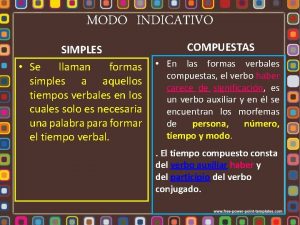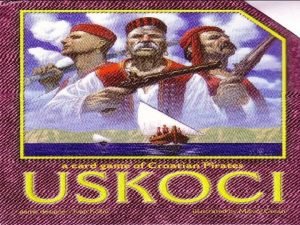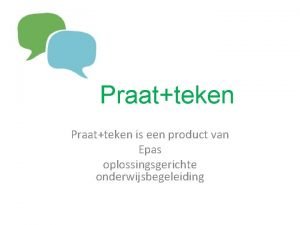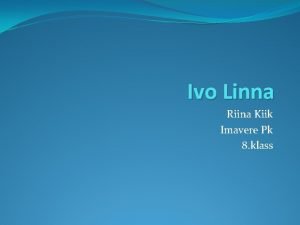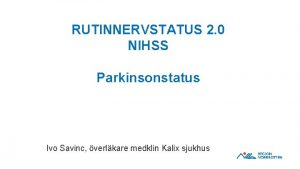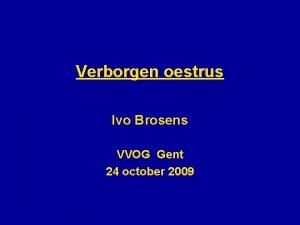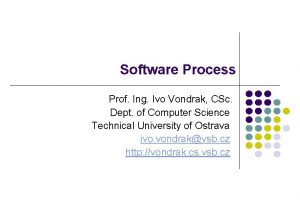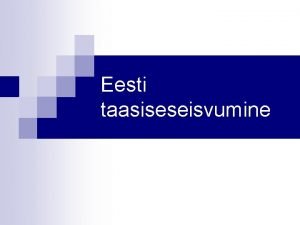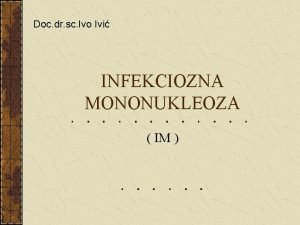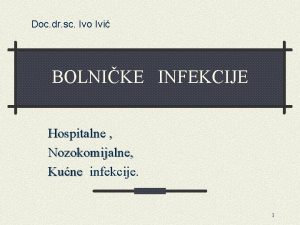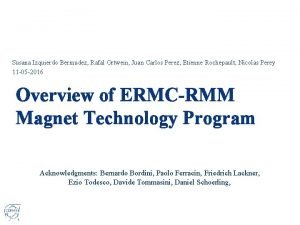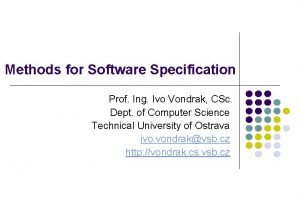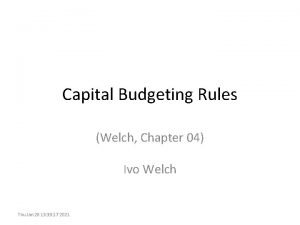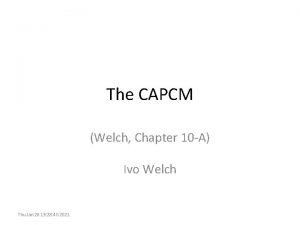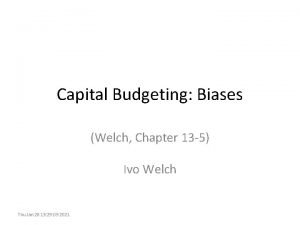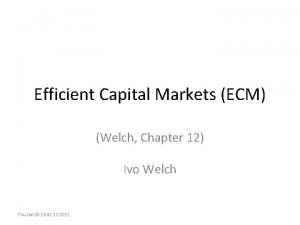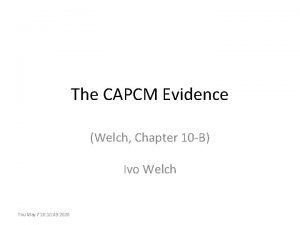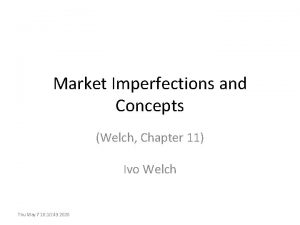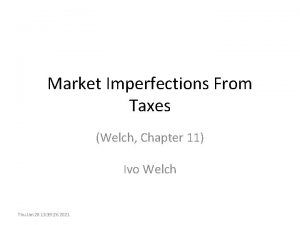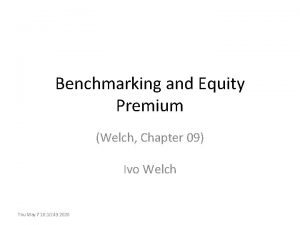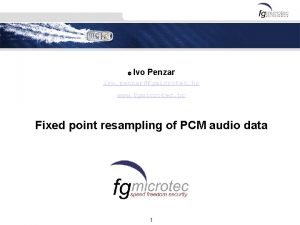Pro Formas Welch Chapter 21 Ivo Welch Thu






































- Slides: 38

Pro Formas (Welch, Chapter 21) Ivo Welch Thu Jan 28 13: 31: 04 2021

1: The Purpose Pro Formas (PFs) project the future, – in the language of business. – A PF is a hypothetical future financial statement. Forecasting is very difficult! – Harder for young uncertain businesses. Integrative: PF have a little of everything. – Didactic problem: very business specific.

2: Precision? Fuhgeddaboudit – The future is tough to predict. – Realistically, just try be better than others. – Most important, get lucky! – Other than luck, forecasting and reacting is what business success is all about. – Learn by doing. Learn from past failures.

3: Internal Users Entrepreneurs, Owners, and Managers: – Have access to private information. – Have to optimize firm choices. – PFs are useful to analyze the effect of a new policy (e. g. , a new project).

4: External Users

5: Structure: Parts – Early Growth Phase, – Late Mature Phase, – Transition Between Them, – Forecasts (Sales!) and Co. C.

6: Structure: Early Growth Phase

7: Structure: Later Mature Phase

8: Structure: Transition Location? When should the growth phase end and the mature phase start?

9: The Uncanny Valley

10: Uncanny Business Forecasts Short-Term (like this month). – relatively predictable? Medium-Term (like 2 -6 years). – hmmm…. Long-Term (like 10+ years). – economic rents will be low or zero. – Plus, discounting reduces the impact of errors.

11: Check Yourself Memory is short. Hottest company… – 10 years ago? Where is it now? – 20 years ago? Where is it now? – 40 years ago? Where is it now? – 80 years ago? Where is it now? Where will today’s be in 20 years?

12: Typical T Break Points The break point between the startup and mature phase is commonly 5 -10 years out. – Occasionally up to 20 years. – Occasionally as low as 3 years. – Rarely much better or worse. – Maybe where growth has declined to inflation.

13: Shortcut (Not-Pro Forma)

14: A Real Sales-Based Pro Forma Almost all real-world PFs are based primarily on a sales-based forecast. How do you predict sales? ? ? – Steady sales growth? – Advance knowledge of products and customers? – Darts? Sales predictions are very project specific. – Useless to cover one in detail here.

15: Sales Forecasts

16: Sales-Based Pro Forma Now what? – Pretend that you have the future sales. – Predict other target financial statement variables. • If your sales projection really turns out as you predicted, • chances are that the rest won’t be too bad.

17: Interesting Targets The most common target variables of interest (financial statement components and items derived) are: – Economic Cash Flows for NPV: • CF from Operations • CF from Investing – Working Capital Balance: • cumulative sum of cash. – Various financial health ratios. • e. g. , current ratio (current assets / current liabilities).

18: Target Forecasting Targeted variables are often decomposed into fixed and variable components of sales and/or sales growth. – Run-of-the-mill decompositions ratios are viable but rarely ideal. Think “crutch. ” If you have a better informed forecast, use it. – e. g. , should you predict a target differently and independently?

19: Proportional Relation

20: Linear Growth Forecast

21: COGS Linear Forecast

22: Sample Use of COGS Forecasts

23: Warnings Estimated coefs are not deus-ex-machina. Estimated coefs were the result of how many firms responded over decades. – Hopefully, firms responded well to their own situations—and hopefully so will you. Do not believe the estimated formula is optimal (or even appropriate) for your firm! – Demand/supply based, industry/firm based, etc.

24: Other IS Items I: SGA, Dep

25: Other IS Items II: Int, Tax

26: Other Financial Statements Balance Sheet: – Usually, stock-based variables have large persistence and are thus forecastable. Cash Flow Statement: – Usually, cash flows are highly variable. – Net Income may be better than CFs. – Oi Wei! Pray.

27: Now What?

28: Terminal Value Estimate (TVE)

29: Common TVE CRUTCH

30: TVE Questions In established firms (e. g. , Intel), what fraction of PF firm value comes from CFs beyond 10 years? In startup firms, what should it be be? How accurate can you expect to be here? – Does sophistication and care help?

31: Cost of Capital

32: Best Practice Be superclear in justifying your assumptions (with solid economics). – Usually done with ample footnotes, – even more so than in actual financial statements. – A reader must be able to replicate your PF.

33: Be Humble

34: Be Critical What are the incentives of the PF creator? – What are your’s? – How much sense does it make? • Do you want “pseudo-science”? • Do you want “pseudo-accuracy”? • Are you being set up for a fool?

35: PFs for Policy Changes

36: Example: Debt Refi Policy Changes Promised cost of debt: easier. Expected cost of debt: harder. Effect of debt on tax shelter: easy. Effect of debt on overall cost of capital: harder. – what will the effect be on equity Co. C? Effect of debt on cash flows: path-specific.

37: Autopsy and Calibration
 Thú mỏ vịt được xếp vào lớp thú vị
Thú mỏ vịt được xếp vào lớp thú vị Formas compuestas del modo indicativo
Formas compuestas del modo indicativo Gerundios y participios
Gerundios y participios Macro pro
Macro pro Ivo senjanin
Ivo senjanin Psyykkinen turvallisuus
Psyykkinen turvallisuus Sustantivos compuestos ejemplos
Sustantivos compuestos ejemplos Ivo velden onderwijs
Ivo velden onderwijs Bart van vulpen
Bart van vulpen Ivo krievs
Ivo krievs Ivo linna vend
Ivo linna vend Ivo lemšs
Ivo lemšs Ivo brettschneider
Ivo brettschneider Ivo sechi nazareno
Ivo sechi nazareno Josivo
Josivo Sant'ivo compuesto
Sant'ivo compuesto Ivo savinc
Ivo savinc Prokleta avlija zaim
Prokleta avlija zaim Johannes wetzstein
Johannes wetzstein Ivo ihrke
Ivo ihrke Ivo vinogradovs
Ivo vinogradovs Ivo brosens
Ivo brosens Ivo vondrak
Ivo vondrak Ivo volt
Ivo volt Ivo krievs
Ivo krievs Ivo krievs
Ivo krievs Cerbritis
Cerbritis Ivo v
Ivo v Fosforiidikampaania
Fosforiidikampaania Aglutinacija
Aglutinacija Ivo ivi
Ivo ivi Ivo ihrke
Ivo ihrke Ivo ortwein
Ivo ortwein Ivo design pattern
Ivo design pattern Ivo design pattern
Ivo design pattern Ivo krievs
Ivo krievs Ivo krievs
Ivo krievs Ivo krievs
Ivo krievs Paulo ivo cortez de araujo
Paulo ivo cortez de araujo

